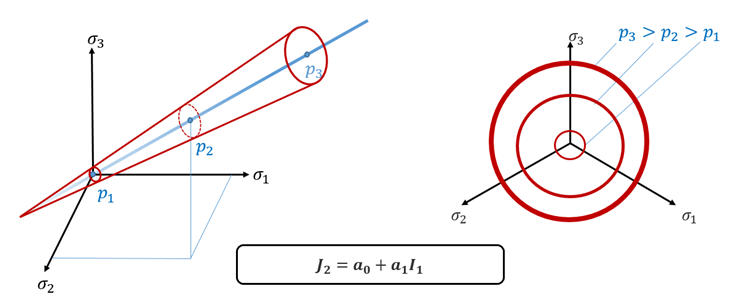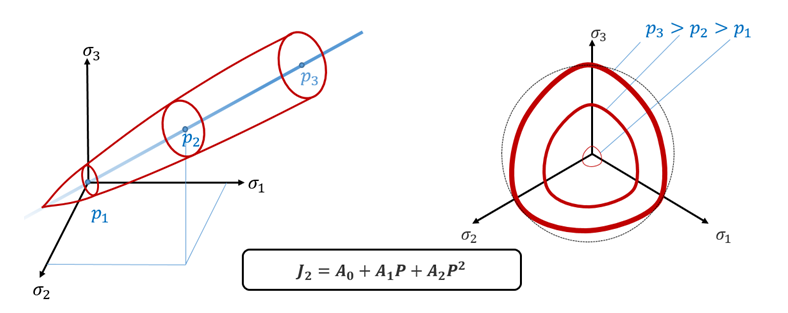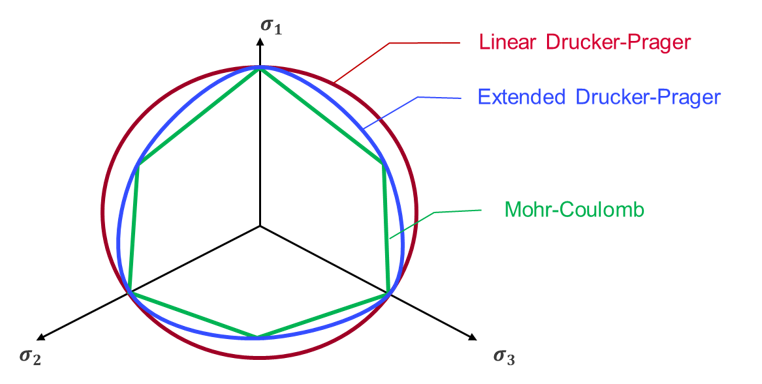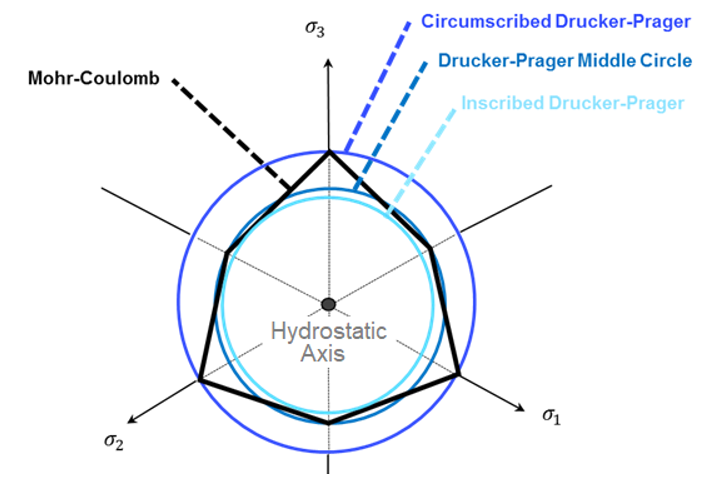/MAT/LAW10 (DPRAG1)
Block Format Keyword This law, based on an extended Drucker-Prager yield criteria, is used to model materials with internal friction such as rock-concrete.
Format
| (1) | (2) | (3) | (4) | (5) | (6) | (7) | (8) | (9) | (10) |
|---|---|---|---|---|---|---|---|---|---|
| /MAT/LAW10/mat_ID/unit_ID or /MAT/DPRAG1/mat_ID/unit_ID | |||||||||
| mat_title | |||||||||
| E | |||||||||
| A0 | A1 | A2 | Amax | ||||||
Definition
| Field | Contents | SI Unit Example |
|---|---|---|
| mat_ID | Material
identifier. (Integer, maximum 10 digits) |
|
| unit_ID | Unit Identifier. (Integer, maximum 10 digits) |
|
| mat_title | Material
title. (Character, maximum 100 characters) |
|
| Initial
density. (Real) |
||
| E | Young's
modulus. (Real) |
|
| Poisson's
ratio. (Real) |
||
| A0 | Yield criteria
coefficient. (Real) |
|
| A1 | Yield criteria
coefficient. (Real) |
|
| A2 | Yield criteria
coefficient. (Real) |
|
| Amax | Yield criteria limit (von
Mises limit). (Real) |
|
| Minimum
pressure. Default = -1030 (Real) |
Example (Concrete)
#RADIOSS STARTER
/UNIT/1
unit for mat
g cm mus
#---1----|----2----|----3----|----4----|----5----|----6----|----7----|----8----|----9----|---10----|
#- 2. MATERIALS:
#---1----|----2----|----3----|----4----|----5----|----6----|----7----|----8----|----9----|---10----|
/MAT/LAW10/1/1
Concrete
# RHO_I
2.4
# E Nu
.576 .25
# A0 A1 A2 Amax
9.72E-10 4.32E-5 .48 .013
# P_min
-1E-20
/EOS/COMPACTION/1/1
Concrete EOS
# C0 C1 C2 C3
0.0 0.256 0.256 1
# MUMIN MUMAX BUNL
0.0 0.44 0.115
# PSH RHO0
0 2.40
#---1----|----2----|----3----|----4----|----5----|----6----|----7----|----8----|----9----|---10----|
#ENDDATAComments
- Original Drucker-Prager
yield criterion has a linear pressure dependency.

Figure 1. Original Drucker-Prager Yield CriteriaRadioss is using the extended Drucker-Prager yield criteria whose pressure dependency is nonlinear.
Figure 2. Extended Drucker-Prager Yield Criteria Implemented in Radioss - Extended Drucker-Prager
yield criteria can be compared with Mohr-Coulomb criteria.

Figure 3. Extended Drucker-Prager Yield Criteria Implemented in Radioss versus Mohr-Coulomb CriteriaAn extended Drucker-Prager yield criterion can be fitted from Mohr-Coulomb parameters:- Cohesion parameter
- Angle of internal friction
For this purpose, parameters must be defined as:(1) - Modeling Type
- Parameters
- Circumscribed Drucker-Prager criteria
- Middle Circle
- Inscribed Drucker-Prager criteria

Figure 4. Fitting a Drucker-Prager Yield Criteria (blue colors) from Mohr-Coulomb Criterion (black) - /MAT/LAW21 is also based on an extended Drucker-Prager yield criteria but pressure evolution can be described with user functions.
- Young's modulus E and Poisson’s ratio are used to determined shear modulus G which is required for sound speed calculation in solid materials.
- Starter checks the yield
parameters A0, A1, and A2 and warns you in case of an unexpected situation.
 Figure 5.
Figure 5.